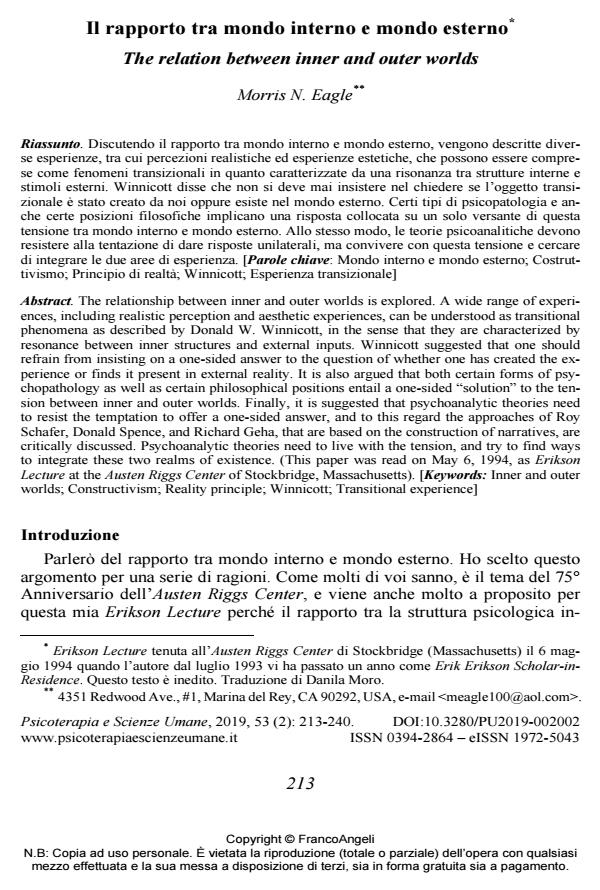Il rapporto tra mondo interno e mondo esterno
Titolo Rivista PSICOTERAPIA E SCIENZE UMANE
Autori/Curatori Morris N. Eagle
Anno di pubblicazione 2019 Fascicolo 2019/2
Lingua Italiano Numero pagine 28 P. 213-240 Dimensione file 112 KB
DOI 10.3280/PU2019-002002
Il DOI è il codice a barre della proprietà intellettuale: per saperne di più
clicca qui
Qui sotto puoi vedere in anteprima la prima pagina di questo articolo.
Se questo articolo ti interessa, lo puoi acquistare (e scaricare in formato pdf) seguendo le facili indicazioni per acquistare il download credit. Acquista Download Credits per scaricare questo Articolo in formato PDF

FrancoAngeli è membro della Publishers International Linking Association, Inc (PILA)associazione indipendente e non profit per facilitare (attraverso i servizi tecnologici implementati da CrossRef.org) l’accesso degli studiosi ai contenuti digitali nelle pubblicazioni professionali e scientifiche
Riassunto. Discutendo il rapporto tra mondo interno e mondo esterno, vengono descritte diverse esperienze, tra cui percezioni realistiche ed esperienze estetiche, che possono essere comprese come fenomeni transizionali in quanto caratterizzate da una risonanza tra strutture interne e stimoli esterni. Winnicott disse che non si deve mai insistere nel chiedere se l’oggetto transizionale è stato creato da noi oppure esiste nel mondo esterno. Certi tipi di psicopatologia e anche certe posizioni filosofiche implicano una risposta collocata su un solo versante di questa tensione tra mondo interno e mondo esterno. Allo stesso modo, le teorie psicoanalitiche devono resistere alla tentazione di dare risposte unilaterali, ma convivere con questa tensione e cercare di integrare le due aree di esperienza.
Parole chiave:Mondo interno e mondo esterno; Costruttivismo; Principio di realtà; Winnicott; Esperienza transizionale]
Morris N. Eagle, Il rapporto tra mondo interno e mondo esterno in "PSICOTERAPIA E SCIENZE UMANE" 2/2019, pp 213-240, DOI: 10.3280/PU2019-002002